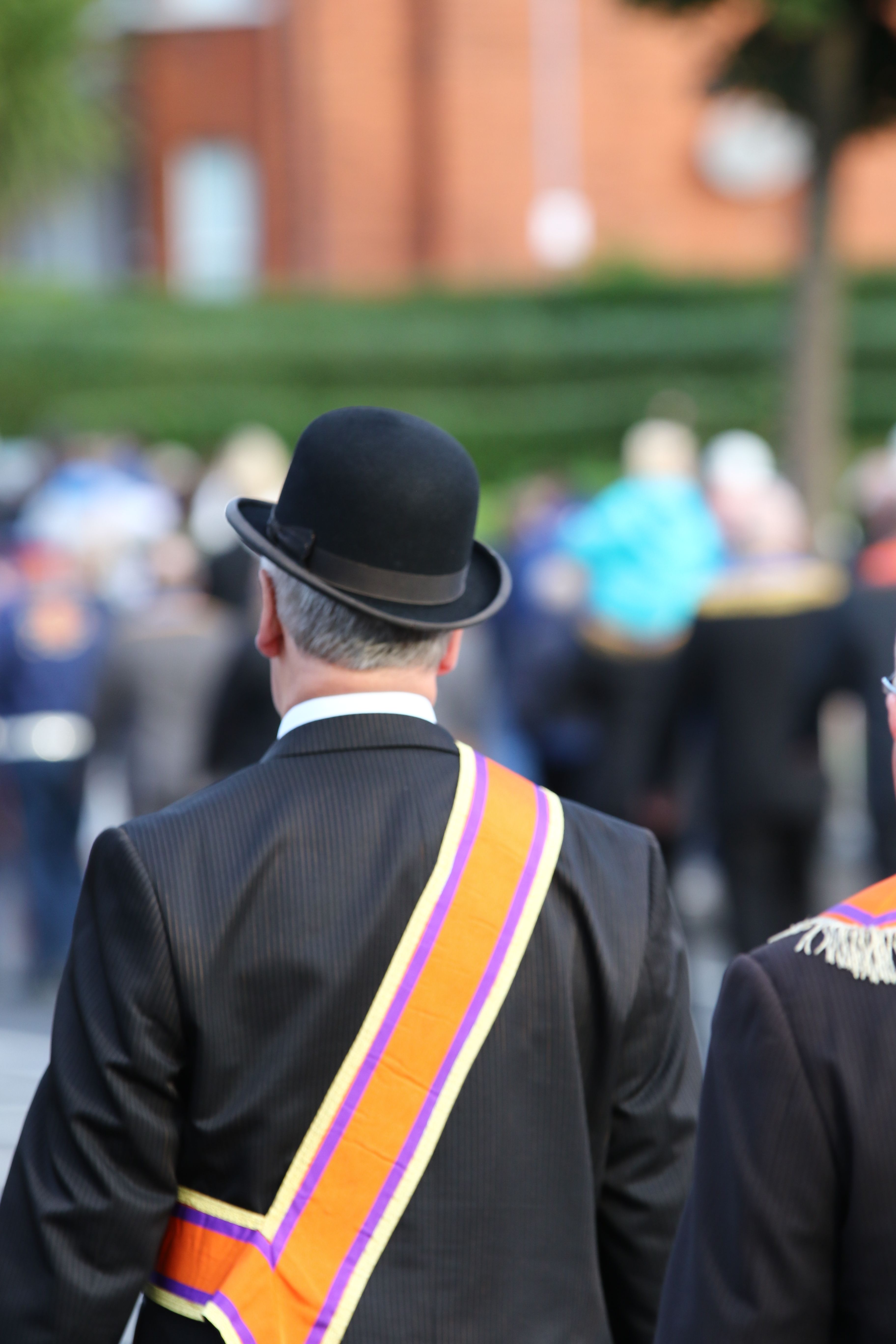LOOK out – here it comes again! The Orange Order, banners aloft, drums thumping, out to celebrate the Twelfth. And to make it a proper celebration, the Ligoniel lodges applied for a ‘homeward return parade’ on the Crumlin Road on the morning after the Twelfth. The Parades Commission have turned them down, which was very churlish of them. Talk about spoilsports! The Twelfth is just a happy annual affair for all the family.
Or is it? For many I’m sure it is, but it’s important not to gloss over the nature of the Order at the heart of this happy day.
The Orange Order came into being after a 1795 sectarian clash in Armagh which left more than thirty Catholics dead. The victors then adjourned to a pub and established the Order. In its origins, its ordinances and its history, the Orange Order has created and maintains sectarian divisions between the people of the North of Ireland.
Let's look at the rules of the sectarian game.
Non-Protestants must not be accepted as members unless they convert and adhere to the Order’s principles. Likewise, it will not accept Protestants married to non-Protestants. Orange Order members must not attend any Catholic service.
Shortly after the Order’s birth in the pub, Lord Gosford, the Governor of Armagh described the situation: "It is no secret that a persecution is now raging in this country... the only crime is... profession of the Roman Catholic faith. Lawless banditti have constituted themselves judges... and the sentence they have denounced... is nothing less than a confiscation of all property, and an immediate banishment."
An example from Dumreilly parish in County Cavan in May 1816: "A number of Orangemen with arms rushed into the church and fired upon the congregation." The priest officiating and several of the congregation were killed.
This kind of wild lawlessness resulted in the Order being outlawed several times throughout the nineteenth century. After the notorious Battle of Dolly’s Brae on July 12, 1849, the authorities banned Orange marches for several decades.
Coming into the twentieth century, the Orange Order, supposedly a religious organisation, had a stranglehold on politics. From the foundation of the northern state in 1921 to 1969, every Prime Minister of this new state was an Orangeman.
Every Catholic brought up in the North will have memories of the Twelfth. There was the triumphalist attitude that insisted on the Order’s right to march along the Garvaghy Road; this culminated in 1998 with the horror at the Quinn family home in Ballymoney, where three young brothers aged 9, 10 and 11 were burnt to death in a UVF attack on July 12. The man who drove the UVF perpetrators to their target was tried and given a life sentence. Yet even though he named the UVF men who had been his passengers, they were never arrested because of lack of evidence.
My experience is that you don’t have to recount such horrors when discussing the Order’s shameful history. Simply to suggest that the Order is an anti-Catholic organisation tends to provoke irrational anger rather than rational debate. Some years ago I was involved in a live radio debate about the Order with a prominent Orange Order member. When I expressed my belief that the Order was anti-Catholic, this man flew into a rage, jumped up from his seat, denounced me as "a rebel" and strode from the radio studio.
I would like to think that deep into the twenty-first century, more unionists and Protestants would speak out against the existence of such an organisation at the heart of our society. Alas, I have heard only about the pre-Troubles days when all Catholics were supposedly delighted to watch the bands. But suggest that the Orange Order is sectarian and you’d better get ready to be abused.






